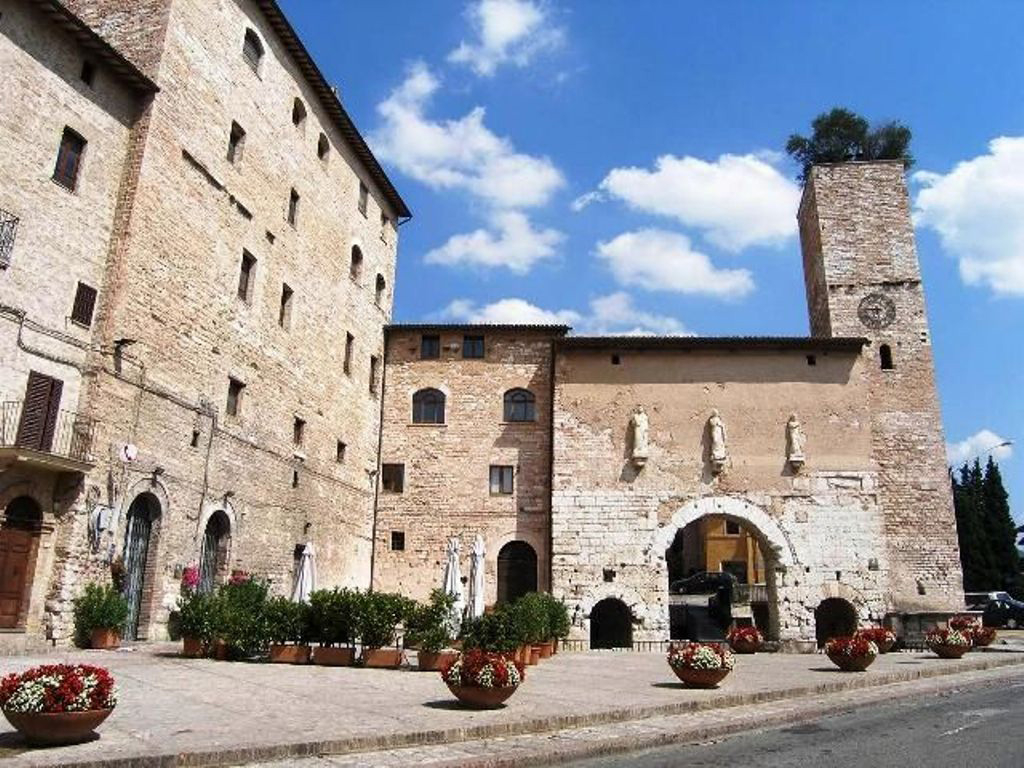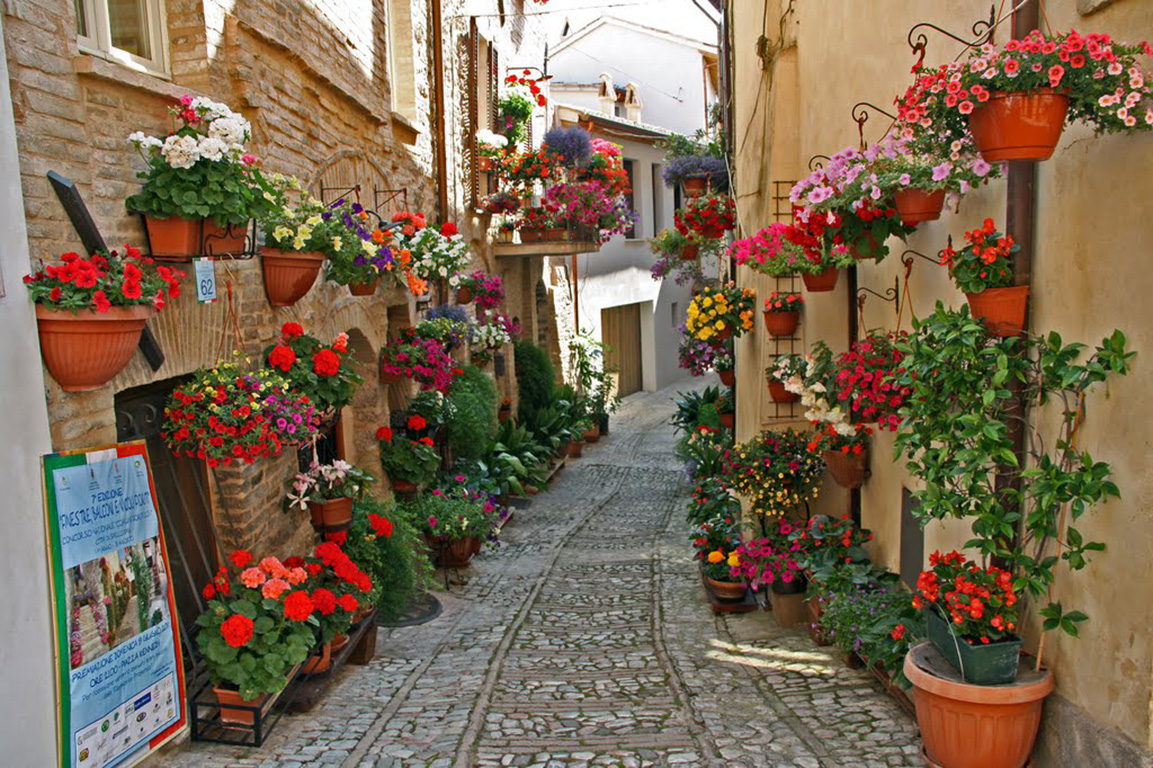The town of Spello
Welcome to Umbria, the green heartland of Italy, the land of Saint Francis, the region of rural landscapes full of charm, with traditions, history, art and culture that are there waiting to be discovered. And welcome to Spello, the pearl of the Middle Ages, with its fascinating town plan, lanes and narrow streets, doorways and squares and old palazzi; its Town Theatre, Municipal Archives and its churches with treasures such as the frescoes of Pinturicchio in the Baglioni Chapel in Santa Maria Maggiore; a town with traditional folklore, with the spectacular “Infiorata di Corpus Domini” and fine food with the “Sagra dell’Olio e della Bruschetta” (olive oil and bruschetta fair). Welcome to a town where you will be warmly received.
Three well-preserved Augustan gates surround the town: Porta Venere with its two towers, Porta Consolare and Porta Urbicale. But Spello’s greatest treasure lies within it walls: they are the magnificent frescoes by Pinturicchio that adorn the Baglioni Chapel, in the Church of Santa Maria Maggiore. The geographical location of Spello offers a splendid panoramic view full of history that spans the Umbrian plain from Perugia to Spoleto. Particularly interesting from an historical and architectural point of view is the mountainous area including two villages from the Middle Ages: Collepino and San Giovanni.
HISPELLUM
Despite its Umbrian origins, the Romans at first called it Hispellum. During the imperial period Augustus granted it the baths of Clitunno and Civitella d’Arno, then had it fortified and surrounded by walls. At the beginning of the 4th century A.D. Constantine the Great gave Spello the name of Flavia Costans. With the collapse of the Empire in the West, it was subjected to the invasion of the Goths, became a part of the Longobard Duchy of Spoleto and followed its sorts until the end of the 12th century, when it was taken over by the Church. It then became a free Commune and towards the end of the century Spello fell under the influence of the Baglioni of Perugia. In 1583 it reverted for good to the Papal States. In the Middle Ages the town went through a period of intense spiritual activity with the preaching of Saint Francis. The Renaissance attracted many artists and men of letters from other towns.
At the beginning of the 18th century, Spello contributed greatly to the Arcadia Literary Academy. Today, Spello is the seat of the Academy of Constantinian Studies.
Tradition and folklore
For the last several years Spello has been trying to recover its folklore and testimonies of rural civilization. The feast, “Infiorata del Corpus Domini”, is without a doubt the symbol of popular art in Spello. The long 1500 metre carpet of flowers with its sweet smells and dazzling colours, prepared for the religious procession, is a fascinating if short-lived creation that has become an event that attracts visitors from everywhere. Rural traditions from the past are brought back to life during the Olive Fair and at the Bruschetta Fair, which, with song and dance (including the famous “saltarello”), are evidence of the attachment of the people to their origins such as the genuine passion for food that is manifested by the genuineness of the ingredients in the typical dishes and flavours of the region.











